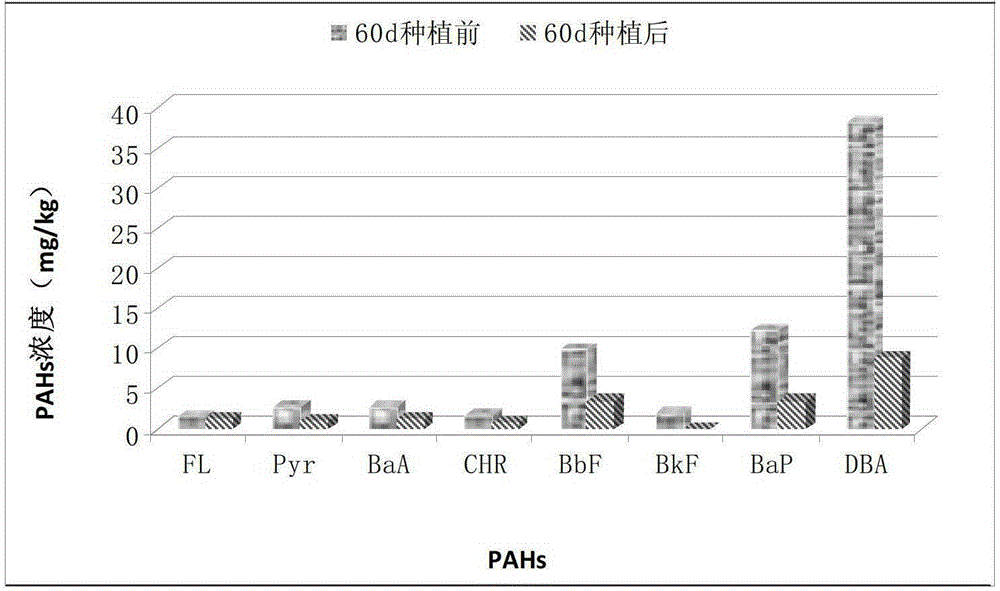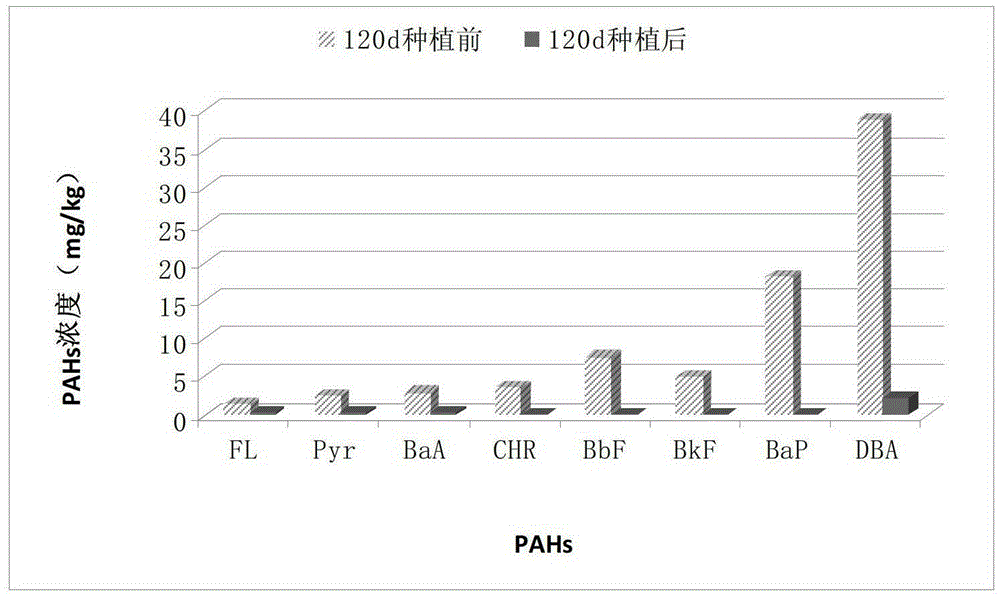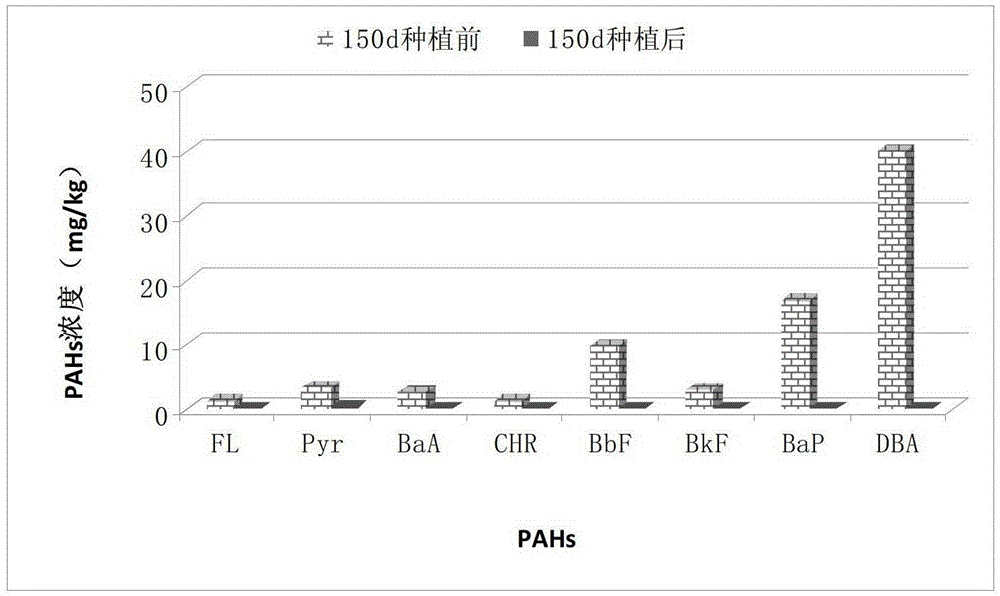A method for remediating polycyclic aromatic hydrocarbon-contaminated soil by using the grass phoenix
A technology for grasses and polluted soil, applied in the field of phytoremediation of polycyclic aromatic hydrocarbons (PAHs) polluted soil, to achieve the effect of improving soil degradation and productivity decline, with less investment and less engineering.
- Summary
- Abstract
- Description
- Claims
- Application Information
AI Technical Summary
Problems solved by technology
Method used
Image
Examples
Embodiment
[0028] The experimental site is located in the net room of the Shenyang Institute of Applied Ecology, Chinese Academy of Sciences. The soil used for the potting experiment is the prepared PAH-contaminated soil, which is the original PAH-contaminated soil (0-20cm) collected from the Shengli Oilfield in Dongying City, Shandong Province and Shenyang City. The natural non-polluted soil (0-20cm) collected in Wanliutang Park was formulated into PAHs-contaminated soil with a PAHs concentration of 50-100mg / kg by weight ratio (1:1). The physical and chemical indicators of the soil are shown in Table 1 . Planting the fire phoenix is to plant the plant seeds in 200g of natural pollution-free soil. Below the 200g of natural pollution-free soil is 1800g of polycyclic aromatic hydrocarbon-contaminated soil, and above it is the middle of 200g of polycyclic aromatic hydrocarbon-contaminated soil (the concentration of polycyclic aromatic hydrocarbons is 80mg / kg). . The experiment also had a...
PUM
 Login to View More
Login to View More Abstract
Description
Claims
Application Information
 Login to View More
Login to View More - R&D
- Intellectual Property
- Life Sciences
- Materials
- Tech Scout
- Unparalleled Data Quality
- Higher Quality Content
- 60% Fewer Hallucinations
Browse by: Latest US Patents, China's latest patents, Technical Efficacy Thesaurus, Application Domain, Technology Topic, Popular Technical Reports.
© 2025 PatSnap. All rights reserved.Legal|Privacy policy|Modern Slavery Act Transparency Statement|Sitemap|About US| Contact US: help@patsnap.com



